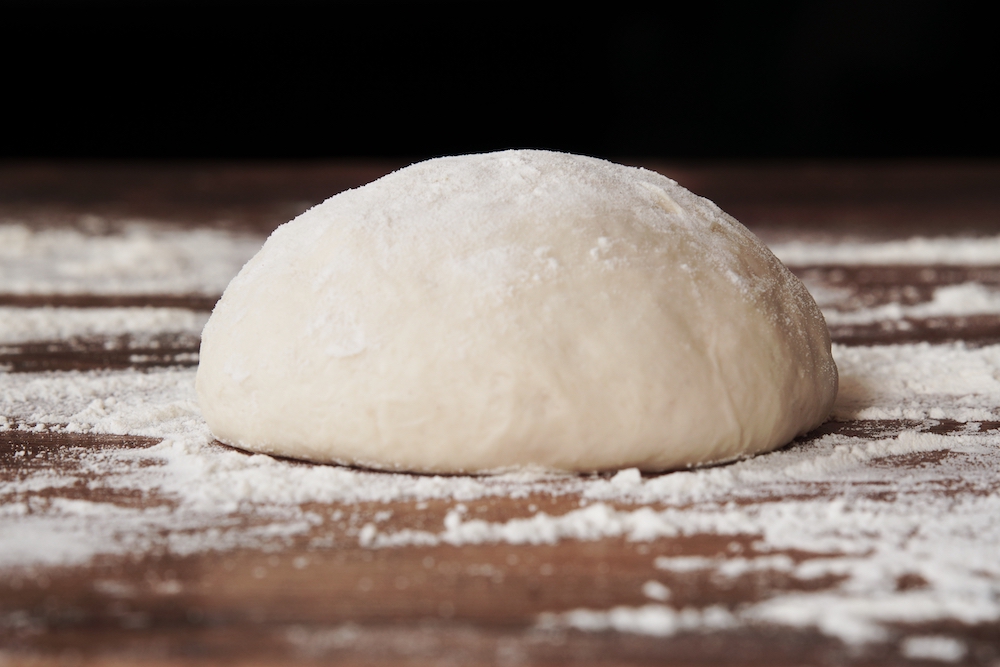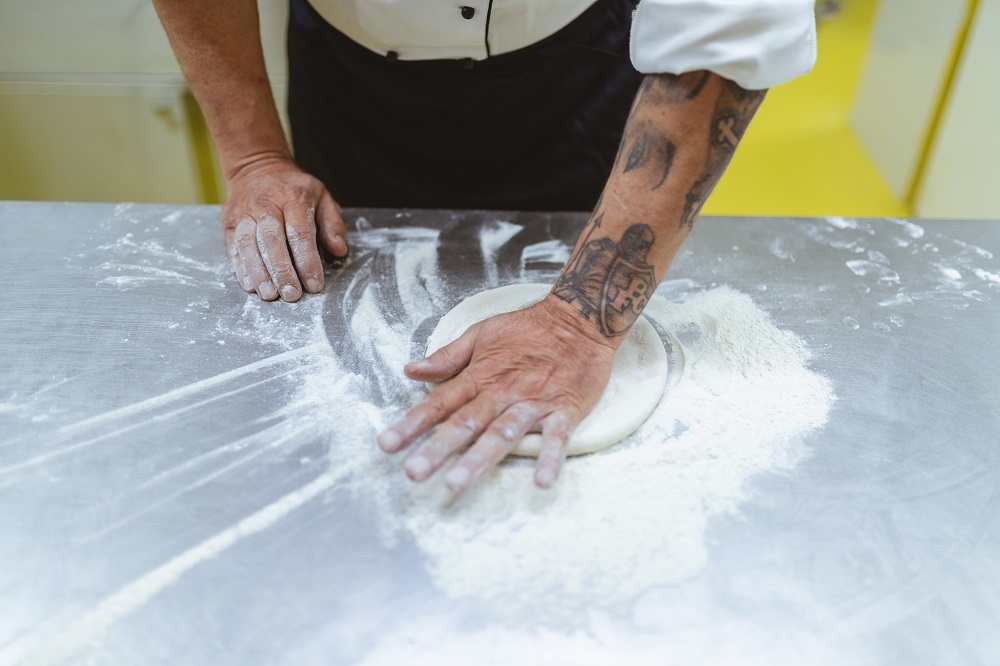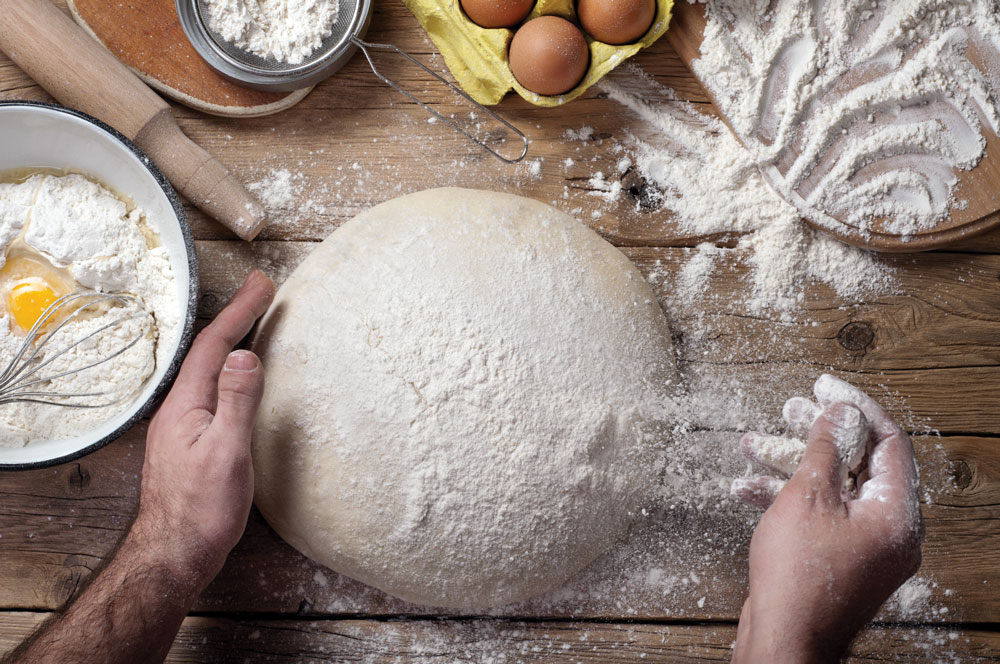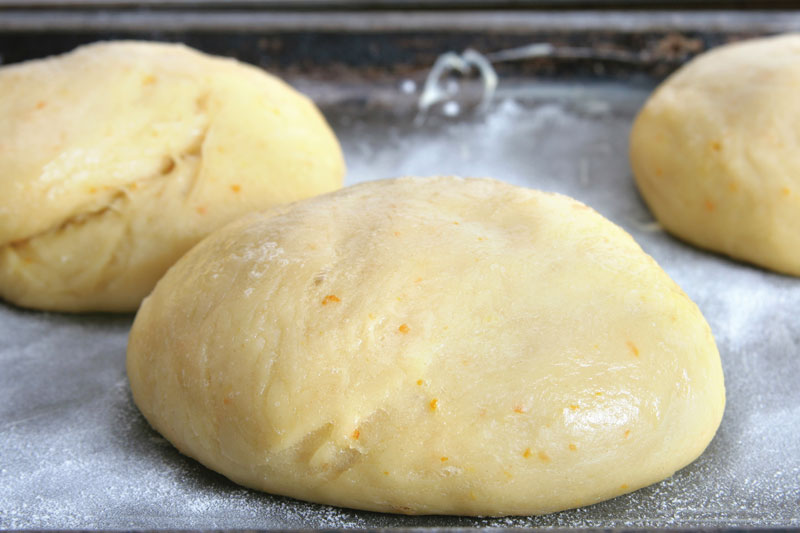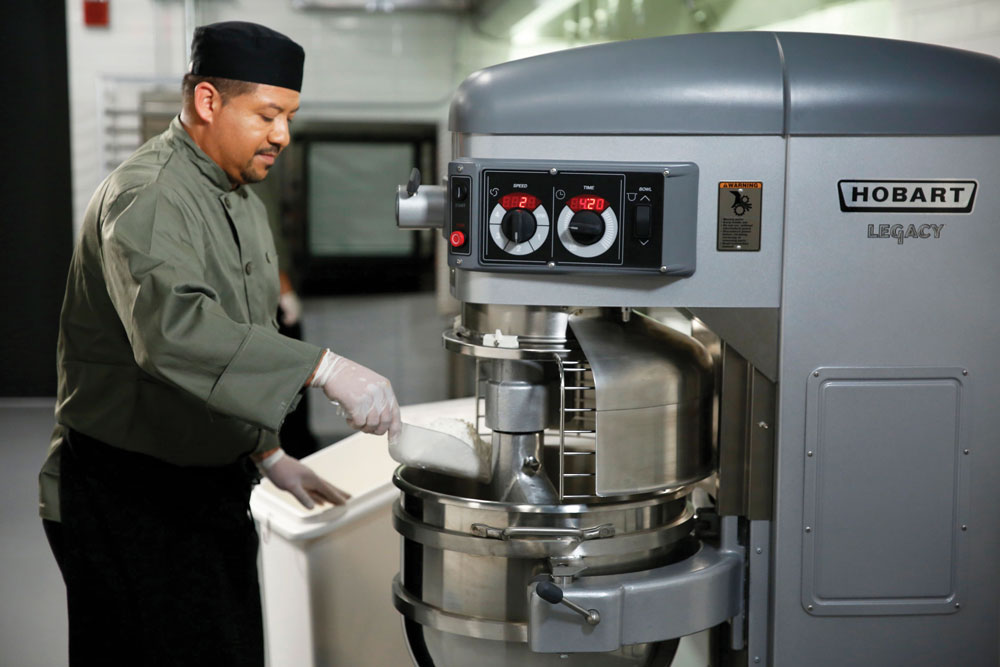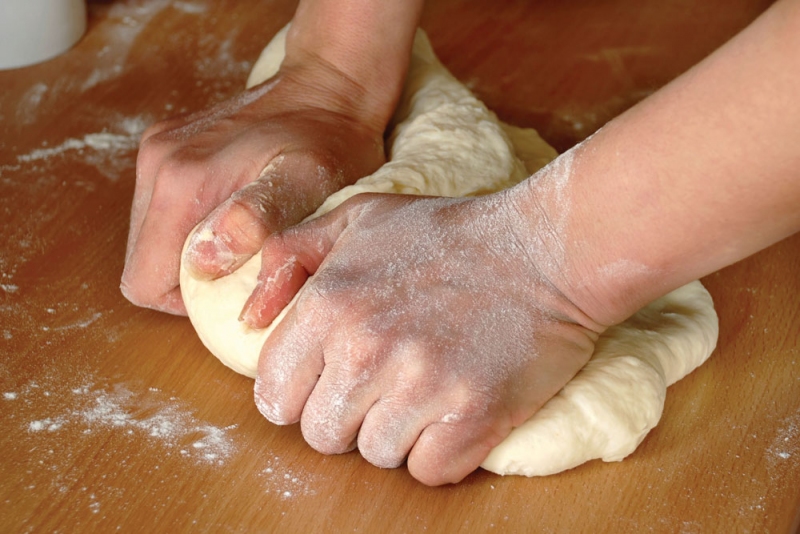Question:
Is it OK to freeze pizza dough?
Answer:
Pizza dough can be frozen, but if you’re like most of us, and don’t have access to a blast freezer (mechanical blast freezing at -20° to -35°F with 600 to 800 linear feet of airflow, or cryogenic blast freezing at -55° to -65°F), you’d be putting the dough into a static freezer at 0°F to -5°F, and allowing it to remain there until it is soli dly frozen. This is referred to as “slow freezing.” Slow freezing sets a very large ice crystal size, which is deleterious to yeast survival. For this reason, when dough is slow frozen, it has a frozen shelf life of only 10 to 15 days, during which time it will exhibit consistent
dly frozen. This is referred to as “slow freezing.” Slow freezing sets a very large ice crystal size, which is deleterious to yeast survival. For this reason, when dough is slow frozen, it has a frozen shelf life of only 10 to 15 days, during which time it will exhibit consistent
performance after thawing (slacking out). For this reason, we recommend that dough, when slow frozen, be given a 10-day frozen shelf life; this will still give you three to five days to use the dough past its expiration date. There has been some discussion about the practice of freezing dough and freezing fully dressed, unbaked pizza skins. In both cases, slow freezing will limit the shelf life of the dough to no more than 15 days. However, the effect of slow freezing on any vegetable toppings will be quite noticeable when the dressed skin is slacked out, as the vegetables will begin losing a significant amount of water from their cells; this will happen even if the frozen, dressed pizza skin is placed directly into the oven for baking. In a deck oven, you will typically see a very wet pizza (what I call swamp pizza). In an air impingement oven, there is typically sufficient airflow directed to the top of the pizza to dry up most, if not all, of the water released from the vegetable toppings, so the problem may not be as pronounced. This is the main reason we suggest that take-and-bake pizzas never be placed into a home freezer.
Question:
We want to open some express stores in the surrounding area. We don’t want to mix dough at each location, so we’re looking at the possibility of freezing our dough at the main store and transporting it to the express stores, where it will be stored frozen, then thawed and used as needed. What advice can you give us in making our own frozen pizza dough?
Answer:
While it’s possible to take your regular dough and freeze it immediately after scaling and balling it, you will probably find that the following modifications will enhance the overall performance of the dough:
1. Due to its consistency, I recommend the use of instant dry yeast (IDY) in this specific application. Some manufacturers produce a form of IDY that is designed specifically for use in frozen dough systems. While not absolutely necessary, you might look into getting a sample to test in your dough to see if it performs better than the standard IDY in your application.
2. Prehydrate the IDY in a small quantity of 95°F water for 10 minutes before adding it to the dough.
3. Since some of the yeast is damaged during the freezing process, it is recommended that the yeast level be increased by ¼ over what you would normally use in a fresh dough system. For example, if you normally use IDY at 0.375% in fresh (nonfrozen) dough, it would be advantageous to increase the yeast level to 0.468% (round to 0.5%) when making frozen dough.
4. Check with a local bakery ingredient supplier and purchase some ascorbic acid tablets (search online for “ascorbic acid tablets bakery application” to find a supplier). Each tablet will provide a specific amount of ascorbic acid per 100 pounds of flour weight. Let’s assume that you’re using 40 pounds of flour in your dough, and each tablet provides 60 parts per million (ppm) of ascorbic acid per 100 pounds of flour weight. Divide 100 by 40 to get 2.5. So each tablet, if added to your dough, would provide 150 (2.5 multiplied by 60) ppm of ascorbic acid to your dough. Typically, frozen dough that will be slow frozen responds well to the addition of 90 to 180 ppm of ascorbic acid. So, in this case, one tablet would be a good starting point. If you need to adjust the amount added, a simple way to do this is to dissolve a tablet in a measuring cup of warm water. If the cup has a capacity of 16 ounces, each ounce will contain 9.375 ppm of ascorbic acid. So, to add 120 ppm, all you would need to do is to divide 120 by 9.375, which means that 12.8 ounces of the water from the measuring cup would contain the needed 120 ppm. You could round this off to either 12.75 or 13 ounces. The ascorbic acid will help to strengthen the dough after thawing, to further improve the handling properties.
5. Adjust the water temperature to give you a finished dough temperature in the 65°F-to-70°F range. This will probably mean using water at about 45°F in the dough.
6. Limit the amount of fermentation that the dough receives prior to freezing by taking the dough directly from the mixer to the bench for scaling and balling. Immediately tray it and place it into the freezer until it is solidly frozen (about four to six hours). Note: I like to partially flatten the dough balls to reduce their cross-section, as this makes it easier to freeze them.
7. As soon as the dough balls are frozen, wipe them lightly with oil and bulk package them into corrugated boxes with a 2 millimeter-thick polyethylene bag liner. Be sure to label with a date of production and a use-by date.
Question:
What is the best way to thaw (slack out) commercial, frozen pizza dough?
Answer:
Most commercial frozen dough manufacturers will recommend that the dough be placed onto lightly oiled sheet pans, or into dough boxes, and allowed to thaw overnight in the cooler for use on the following day. However, here at AIB, we’ve found another way to handle frozen dough that might make a better finished pizza. Place the frozen dough balls into plastic dough boxes, and lightly oil the tops of the dough balls. Stack the boxes in the cooler (do not cross-stack), and allow the dough to thaw overnight. Remove the dough boxes from the cooler and allow them to stand at room temperature for one hour. Take the dough boxes back into the cooler for use on the following day. This allows the dough to slack out overnight; then, when you pull the dough out of the cooler and allow it to stand at room temperature, the dough begins to warm slightly, allowing for some fermentation to take place after the dough has been put back into the cooler during the second overnight period. We’ve found that this results in a crispier, more flavorful finished pizza crust.

